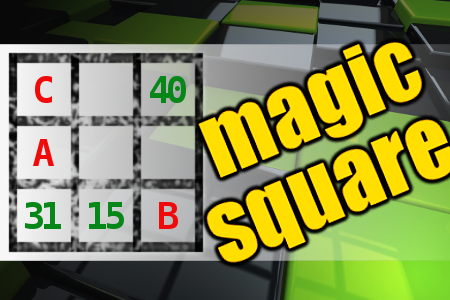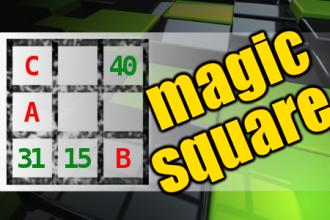MAGIC SQUARE: Calculate A-B+C
The aim is to place the some numbers from the list (6, 10, 15, 25, 29, 31, 34, 35, 38, 40, 49, 69) into the empty squares and squares marked with A, B an C. Sum of each row and column should be equal. All the numbers of the magic square must be different. Find values for A, B, and C. Solution is A-B+C.Correct answers: 11
The first user who solved this task is Fazil Hashim.
#brainteasers #math #magicsquare

Out of the mouths of babes
I told my kids that we are no longer saying “shut up” because it sounds mean and can hurt people’s feelings. So my kids are getting creative with their use of words. My 9-year-old daughter was talking and talking, and my 6-year-old son couldn’t take it anymore and said, “SILENCE YOU PEASANT!”

